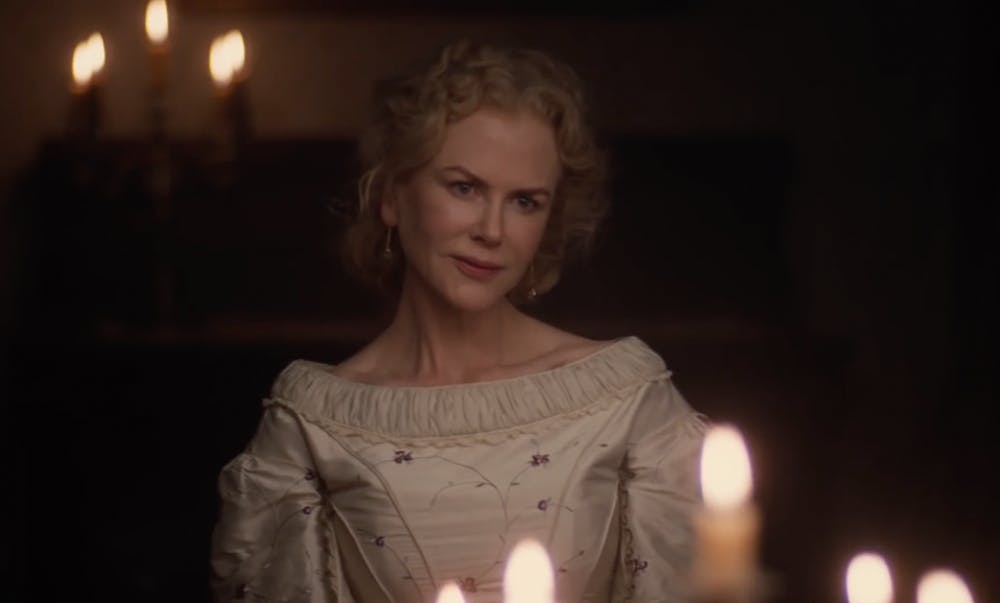The career of actress, screenwriter and director Sofia Coppola has often been mired by accusations of nepotism and privilege, largely due to the dynastic filmmaking family from whence she was born. Most of Coppola’s relatives are also Hollywood multihyphenates—her father is director Francis Ford Coppola, her aunt is actress Talia Shire and her sprawling list of cousins includes actors Jason Schwartzman and Nicolas Cage. (Yes, Nicolas Cage was formerly Nicolas Coppola.) Needless to say, immense pressure has been placed on Sofia Coppola to create a filmography that is discernibly her own. And while her latest film “The Beguiled” is a clear refinement of her style, it’s evident that Coppola hasn’t quite achieved a caliber of filmmaking that could rival her father’s.
“The Beguiled” draws its story from the 1966 novel of the same name written by Thomas P. Cullinan. If the title sounds familiar, it’s because the original novel has already been adapted into film—the 1971 version, also named “The Beguiled,” was directed by Don Siegel and starred Clint Eastwood. Both films are set in a girls’ preparatory school located in the Confederate South, and, due to the raging Civil War, only the headmaster Martha Farnsworth, teacher Edwina Morrow and five female students remain (in Coppola’s version, Martha is played by Nicole Kidman and Edwina by Kirsten Dunst). The youngest student, Amy (played by Oona Laurence), discovers an injured Union soldier named John McBurney (played by Colin Farrell) in the woods nearby as she’s picking mushrooms, and, in a show of kindness, leads him back to the school for help. Instead of turning John over to the authorities, the women decide to accept the enemy soldier into their home until he fully recovers from his injury.
Here is where Coppola’s rendition of “The Beguiled” departs from that of both the source novel and Siegel’s film: completely erased from the plot is the character of Hallie, a slave who was owned by Farnsworth and tended to the school. (“The slaves left,” Amy tells John, which is the only mention made of slavery in the entire film.) Coppola has faced scrutiny for her treatment of non-white characters in the past—in particular, her sophomore film “Lost in Translation” is riddled with anti-Asian racism—and “The Beguiled” is no exception. She addressed the issue by quipping, “Young girls watch my films and this was not the depiction of an African-American character I would want to show them.” While it may be true that Coppola would prefer to write enfranchised black women instead of those who are enslaved, it’s a heavy-handed exclusion that perhaps only a white filmmaker would be so careless to make. To write a film about the Confederate South without the presence of slavery is not only irresponsible, but it further contributes to the cinematic white-washing of history, a facet of the film that cannot be easily ignored.
In addition to suffering from the glaring omission of slavery, “The Beguiled” becomes lost in its dedication to aesthetic and direction over storytelling. Coppola’s style is undeniably mesmerizing—perfectly framed shots linger on overgrown foliage and the school’s plantation-style architecture, and her dawdling direction creates an intentionally cloying and tense atmosphere. But pretty pastel hues and ornate costumes are not enough to carry “The Beguiled,” which is most evident in Coppola’s frustrating lack of pacing and characterization. Because the film begins with the discovery of John, the women of the Farnsworth Seminary for Young Ladies do not exist with goals or desires outside of that man. We catch glimpses of their dreams—Martha sighs and tells John that she wants to go far, far away from Virginia—but they’re flimsy and undeveloped. As the tension builds, the viewer is supposed to feel frightened for the women, wary of John’s intentions, but it’s hard to connect with the girls, to root for them and to feel for them, when their characters have hardly been fleshed out.
Partly to blame is the lack of time given to unravel the plot. “The Beguiled” is a tight 94 minutes long, the bulk of which is spent leisurely exploring the girls’ sexual infatuations with John and their competitive drive to court him. Only in the last 20 minutes or so minutes does the climax occur, and it’s over as quickly as it began, leaving the most interesting development of the film to be rushed to a curt and unfulfilling resolution. “The Beguiled” is perhaps the most well-executed of Coppola’s films in terms of direction and cinematography, but the film’s lackluster storytelling spoils its riveting third act. If Coppola wants to make a truly remarkable film, she’ll first have to trade some of her beloved visuals for a heartier storyline—a sacrifice, it seems, she might be unwilling to make.
Get The Chronicle straight to your inbox
Signup for our weekly newsletter. Cancel at any time.

